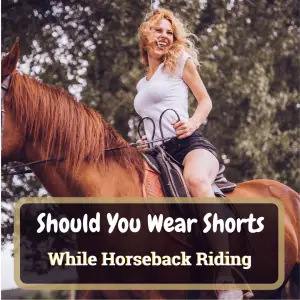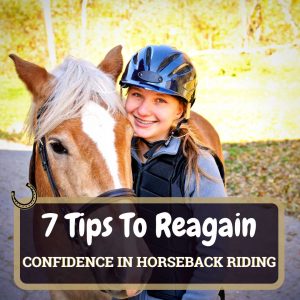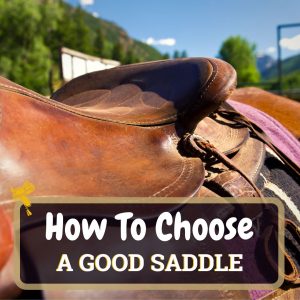For even the most experienced riders, trailering their precious equine cargo can be nerve-racking. If you’re shopping for a trailer for the first time, the options can seem overwhelming. Below, you’ll find a guide to the most common horse trailer types. We’ll discuss bumper pull, gooseneck, and rear facing trailers. We’ll also compare straight load, slant load, and side loading options.
Bumper Pull Horse Trailers
A bumper-pull trailer, despite its name, attaches to a hitch on the rear of the tow vehicle and not the actual bumper. You might also hear these trailers referred to as “tag-alongs,” because they follow along behind the tow vehicle rather than becoming part of the total rig. These trailers are usually cost-effective, lighter in total weight, and shorter in total length.
Advantages of Bumper Pull Trailers
If you have a smaller tow vehicle, such as an SUV, or a limited amount of space to store your trailer when not in use, the weight and length of your trailer will be a special concern. Bumper-pull trailers are typically more available, and you may already have a rear hitch on your tow vehicle, which eliminates the need to install a special hitch assembly.
Another advantage to a bumper-pull trailer is the turning radius follows the tow vehicle while making a turn. There are less adjustments to make as you’re hauling, making the bumper-pull trailer less intimidating for many drivers Finally, a bumper-pull trailer is less likely to be classified as a commercial vehicle. The lighter weight of these trailers means they are typically under the 10,001 lb. weight limit most states require.
Disadvantages of Bumper Pull Trailers
However, because bumper-pull trailers are shorter and lighter weight, this often means that storage space for dressing or tack rooms is limited or non-existent. While bumper-pull trailers for up to four horses exist, some bumper-pulls are not recommended for more than two horses because of the strain placed on the hitch.
Another thing to keep in mind when looking at bumper-pull trailers is the size of your horse. Again, because bumper-pulls tend to be shorter in length, if you have a larger horse, he or she might be more comfortable and safer in a different trailer.
Safety Concerns for Bumper Pull Trailers
Perhaps the biggest concern with bumper-pull trailers is that they are often less stable, especially on curvy roads. Because of its attachment to the rear of the tow vehicle rather than over the tow vehicle’s axle, bumper-pulls have a tendency to “fishtail” or sway, which can be downright scary for the driver, and probably the horses too!
This lack of stability can also lead to trailering accidents, so you’ll want to carefully ensure that your tow vehicle is properly rated for the weight you are towing.

Gooseneck Horse Trailers
The main difference between a gooseneck trailer and a bumper-pull is that a gooseneck attaches directly over the rear axel of your tow vehicle allowing for a tighter turn radius. A gooseneck trailer is generally larger and more expensive than a bumper-pull, but offers more stability, options for towing, and other amenities.
Advantages of Gooseneck Trailers
Because of its attachment over the rear axel, a gooseneck trailer is often a better choice for towing more than two horses. Since the weight of the trailer is placed over the rear axel rather than the frame of the tow vehicle, there is less swaying and more stability.
Goosenecks often offer more space for horses and humans, with larger stall areas, and more options for tack storage. For those that travel with their horses frequently, living quarters can be easily included with a gooseneck. In a pinch, even gooseneck trailers without proper living quarters can serve as an impromptu camper if you stash a mattress in the space over the truck bed.
There also tend to be more configuration options with a gooseneck trailer, such as a side-loading option, which allows you to load and unload your horse head-first instead of needing to back them out of the trailer.
Disadvantages of Gooseneck Trailers
In addition to its cost, one of the biggest downsides is that a gooseneck trailer is usually longer and heavier than a bumper pull which then requires a larger tow vehicle.
You will also have to install a gooseneck hitch in the bed of your truck, as many trucks don’t come equipped with this feature. Each time you hitch or unhitch your trailer, you’ll need to climb into the bed of the truck to reach it. A gooseneck’s length can also make it harder to store your trailer when not in use.
Safety Concerns for Gooseneck Trailers
While a bumper pull trailer follows the path of the tow vehicle, a gooseneck trailer has a tighter turning radius. This means a gooseneck can be easier to maneuver, particularly in reverse.
You will also need to account for the tighter radius by making wider turns with your tow vehicle. You can easily clip a fence post or run over a curb if you’re not careful!

Rear Facing Horse Trailers
While less common than bumper pulls and goosenecks, rear facing trailers might be the future of horse transport. While a standard trailer often positions the horse facing the front of the trailer or on a diagonal, a rear-facing trailer positions horses so that—you guessed it—they face the rear of the trailer. These trailers typically include a side and rear ramp so that horses can be loaded head-first using the side ramp and unloaded using the rear ramp.
Advantages of Rear Facing Trailers
Rear facing trailers are thought to be easier on the horse, causing less stress and minimizing the strain on their legs. Since horses balance more of their weight on their front legs, they are better able to balance when facing away from the direction of travel.
According to recent studies by Dr. Sharon Cregrier, who researches best practices in transporting horses, the animals are less likely to fall in transit or collide with trailer partitions when travelling rear facing. In addition, many horse owners can attest that if given the option (such as travelling loose in a box stall), horses often position themselves rear facing when possible.
Disadvantages of Rear Facing Trailers
In a trailer specifically designed to be rear facing, safety concerns are similar to other trailer types. However, a rear facing trailer without a side ramp might pose problems for loading horses, because it would require you to back your horse onto the trailer.
Loading Options for Horse Trailers
Another consideration when determining the best trailer for your needs is the loading option: straight load, slant load, or side load. Let’s take a moment to address each of these loading option.

Straight Load Trailers
In a straight load trailer, horses are loaded head first from the rear of the trailer and usually must back out when unloading. A straight load trailer typically has a center divider and is limited to a two-horse option.
Straight load trailers often provide the horse with more space to balance while travelling, and are generally taller in height. This makes them a good option if you have a larger horse. These trailers also provide the horse with more headspace, which is particularly important if you tend to trailer long distances.
Slant Load Trailers
In a slant load (sometimes also called an angle load), horses are loaded diagonally, with their heads facing one long side of the trailer and their rear ends against the other side. A slant load trailer allows you to fit more horses into a shorter space.
Since the dividers can be pushed to one side of the trailer, creating a more “open” environment, slant loads can be helpful for problem loaders. They also allow enough space for most horses to turn around and unload head-first.
Slant load trailers often provide horses with less space to balance, and the more limited head space can also mean a bit of claustrophobia for certain horses. Some people also argue that slant load trailers cause uneven strain on a horse’s legs because the left hind leg and right fore leg must compensate more when travelling in a slanted position.
Finally, if you have multiple horses in a slant load, you will have to unload each horse to get to the horse in the front stall. This can be at best, annoying, and at worst, a safety concern.

Side Load Trailers
A side load trailer includes a second ramp on the side of the trailer. This allows you to lead a horse up one ramp and off the other without the horse needing to back off of the trailer. Once on the trailer, the horse travels at an angle, similar to the slant load trailer. Since the ramp is positioned on the side of the trailer, these trailers are often longer and require a larger tow vehicle.
The side ramp can also be more expensive than other loading options. However, the second ramp provides you with multiple access points, which can help solve some of the concerns of a longer trailer.
You can still get to the first horse while possibly leaving other horses loaded toward the back of the trailer. This would depend on how many horses you have loaded.
Some trailers provide extra options for dividing horses, so if you need to transport a stud, a side load trailer can provide extra flexibility.
Towing Vehicle Guidelines
The final thing to consider when deciding what trailer is right for you is to determine the towing vehicle your trailer requires. Ideally, it’s usually best to choose the trailer that suits your needs first. Once determined, you then find a tow vehicle that can safely tow the trailer.
No matter the trailer and tow vehicle combination, you’ll want to make sure that your vehicle can safely handle the combined weight of your trailer, horses, tack, hay, and other gear. Your trailer should come with information including the axle capacity and Gross Vehicle Weight Rating (GSWR). This number is provided by the manufacturer and will tell you the maximum weight that your trailer can safely hold.
Next, you’ll want to determine the towing capacity of your vehicle (or compare the towing capacities of vehicles you’re considering purchasing). Every vehicle that can be used for towing should have a maximum towing capacity listed by the manufacturer.
Make sure that you have the proper model and vehicle specifications for your particular vehicle, as sometimes the same model vehicle can have a different towing capacity due to engine size or transmission type. It’s not enough for your tow vehicle to meet the GSWR weight of your trailer. You will want to look for a tow vehicle that can safely handle about 10 percent more than your GSWR.
Towing Requirements for Bumper Pull Trailers
Since bumper pull trailers tend to be lighter and shorter and attach to the vehicle’s rear frame, you have more options in tow vehicles. However, if you have a smaller vehicle such as an SUV, you’ll want to be especially careful that your vehicle is properly rated for your trailer and that it is equipped with the correct towing package and weight distribution hitch for your needs.
Another important consideration is the vehicle’s wheelbase. This is the measurement from the front axle to the rear axle. In general, the longer the wheelbase, the more stable the rig. This is especially important for a bumper pull trailer.
Towing Requirements for Gooseneck Trailers
A gooseneck trailer requires a pick up truck because of the way the trailer attaches to the tow vehicle. The longer and heavier gooseneck trailers also usually require larger, full-ton trucks, while you might be able to tow certain bumper pull trailers with a half-ton truck.
What is the best trailering option for you?
Each style of trailer fits a need. From simple 2 horse bumper hitch models, to full blown goosenecks with every amenity possible included.
For every need there is a trailer built for it. Next to your horse, this will likely be your most costly investment. Getting all the information beforehand will make your decision easier and cost effective for now and in the future.








